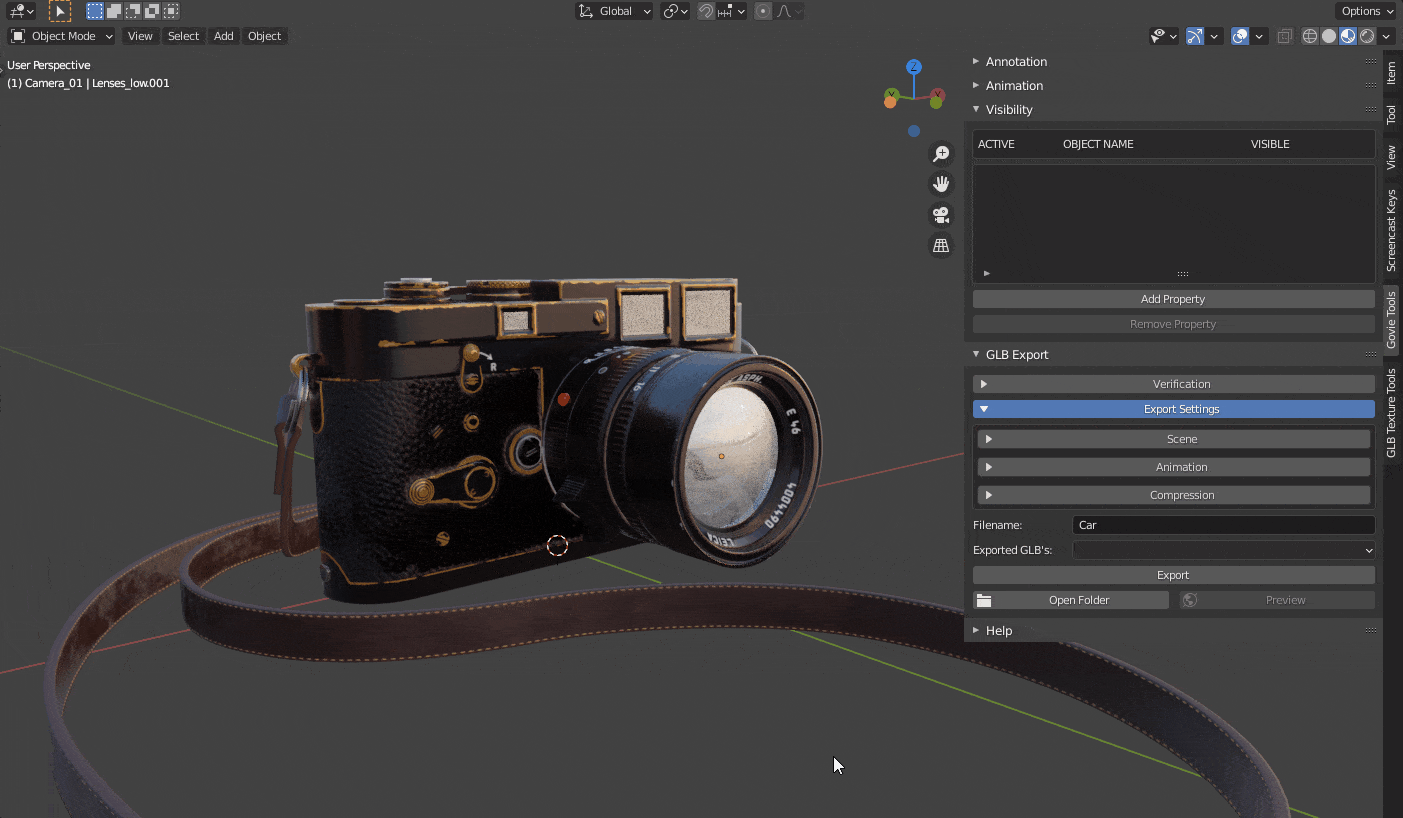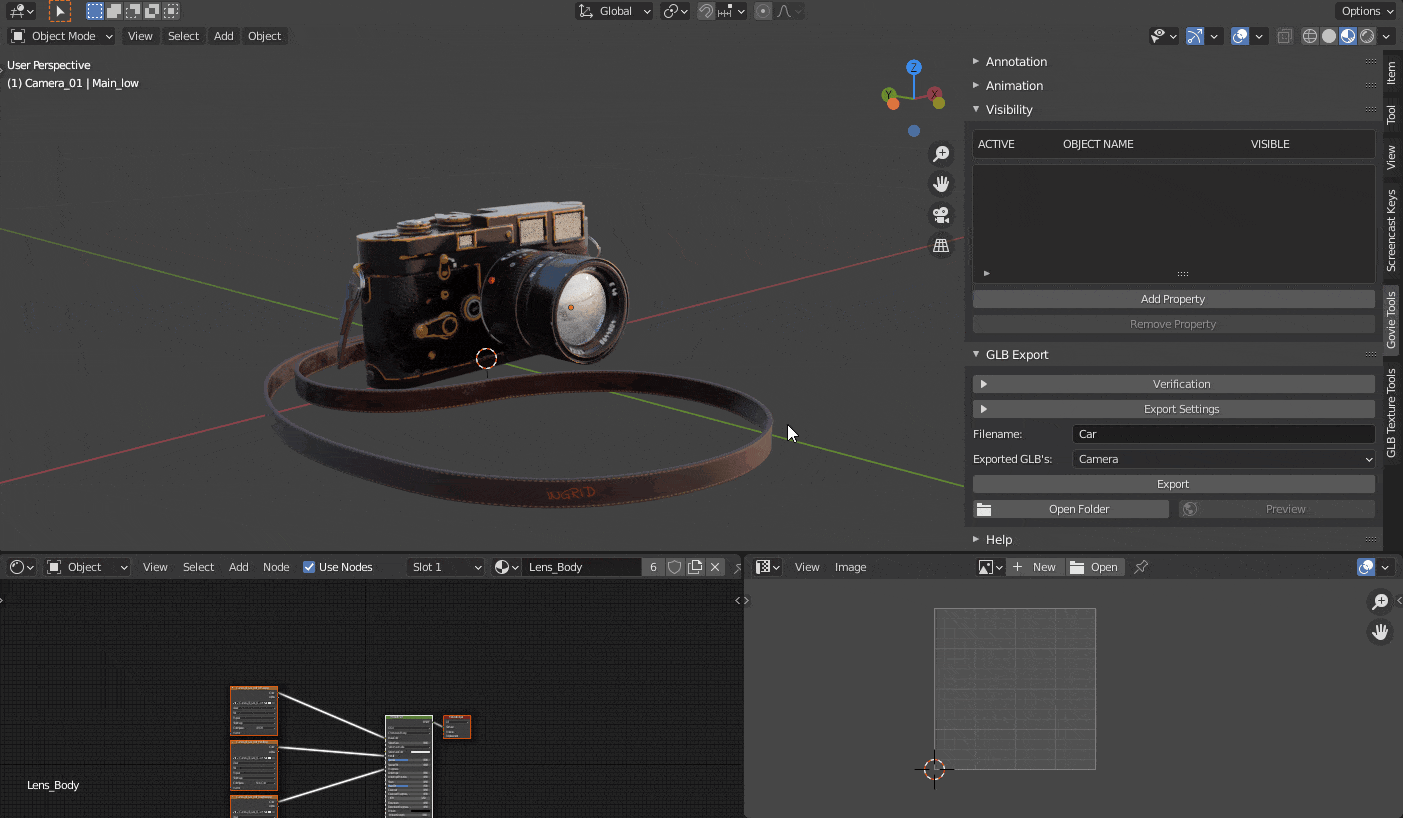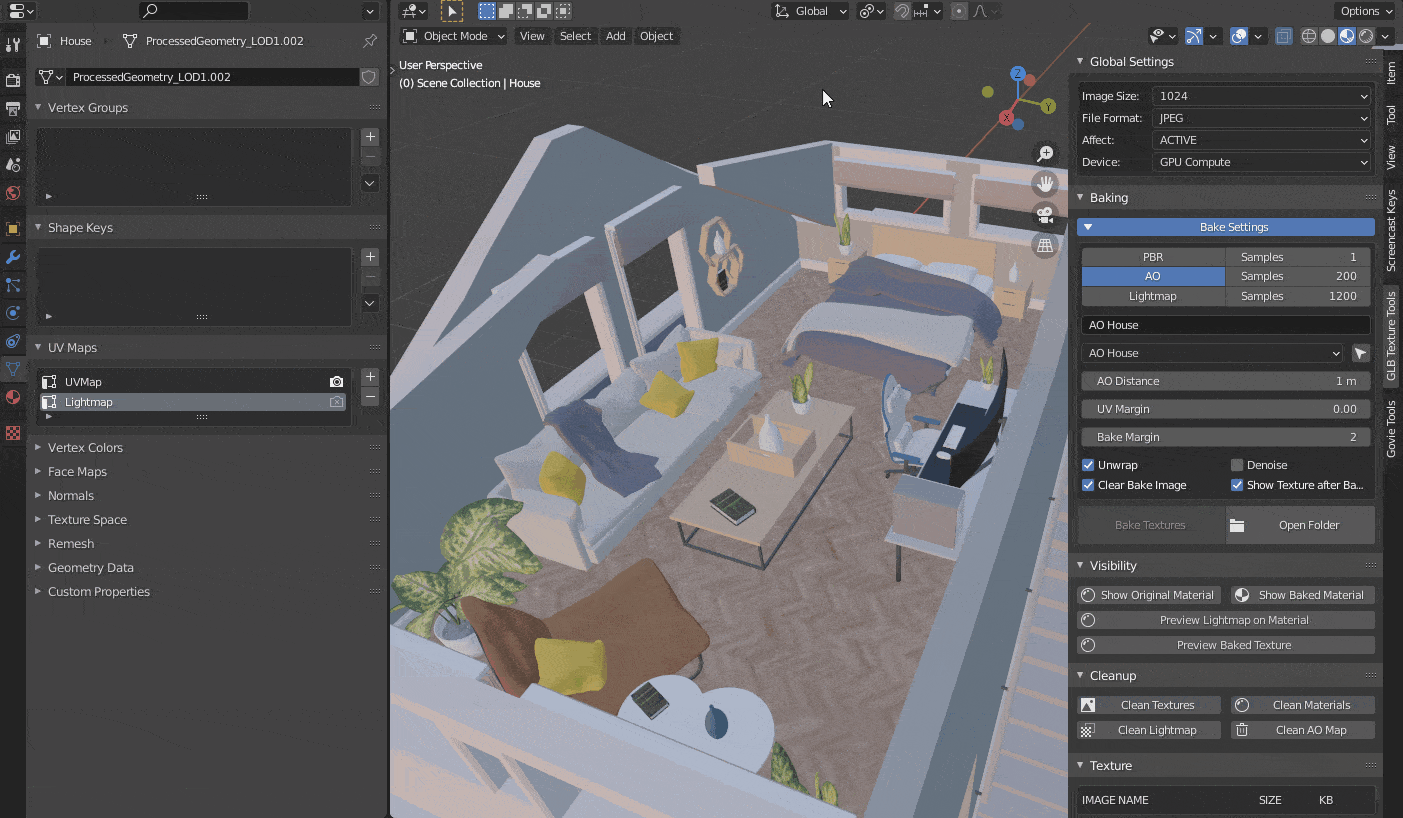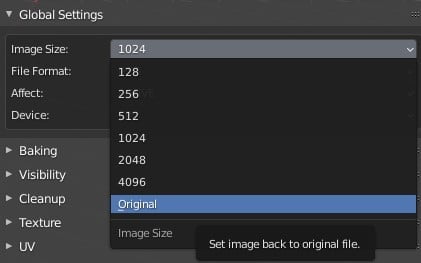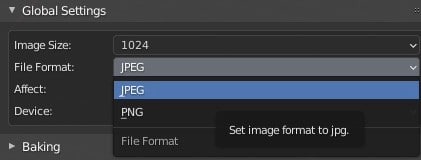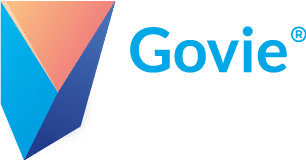Scope of functions #
- Dynamic scaling of textures
- Conversion of any node setup to PBR materials
- UV tools for multi-UV layer editing
- Creation of AO and lightmaps
- Cleanup tools for mesh, material and texture cleanup
Installation #
Preparations #
The Blender software is required to use the add-on. This must be downloaded and installed beforehand. If Blender has already been installed once before, you also have the option to apply existing settings.

Now you need to download and install the Govie Tools add-on. To do this, open Blender and select Settings from the Edit menu at the top.
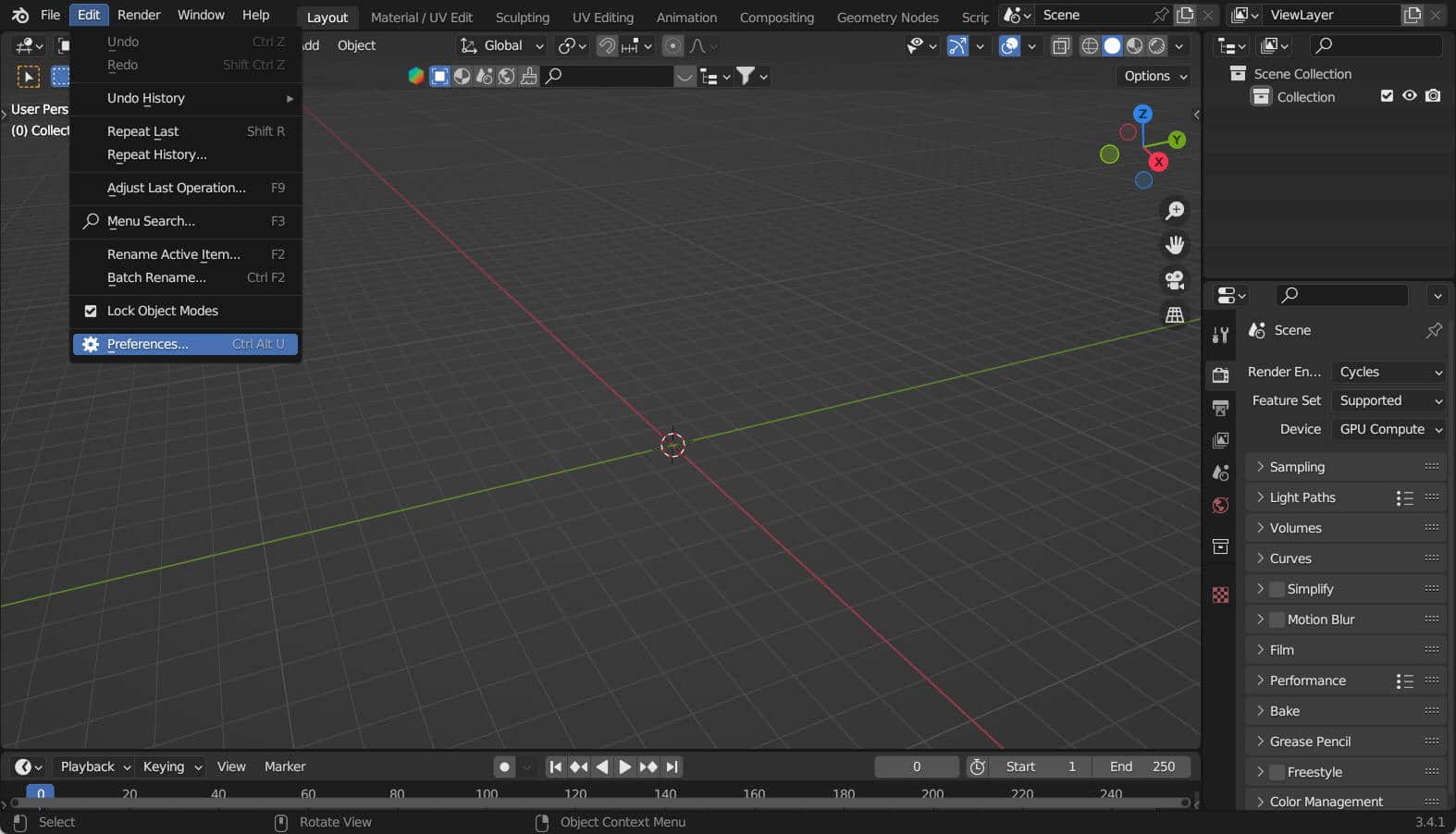
Scaling Textures #
To reduce the file size, Draco compression is sometimes not enough. Draco essentially reduces the model geometry. If large textures are present, they must be reduced separately.
- Open the Textures Menu
- textures for the selected object are displayed here
- the Show all Textures option allows you to display all textures in the scene
- in the Global Settings you can now set the target resolution and the file format
- after a click on Scale Image the textures are converted
Baking - AO #
AO maps can be created by clicking on the Bake Textures button. After beaconing, the addon automatically creates a new node setup in your material that allows to include the AO map into the GLB file.
- Set desired resolution and file format
- Set Sample Rate for AO Baking (start with low value for testing)
- Select Unwrap if no second UV is available yet
- if necessary assign name for AO map (autogenerated identifier is AO + object name)
- Click Bake Textures
- if Show Texture after Bake is active, the baked AO map is displayed directly in the viewport
Baking - AO Grouping #
For each baked AO or lightmap a separate group is created, which can be selected again later. This way, an individual texture size can be used for different objects.
- by selecting additional objects and then beaconing, additional AO groups can be created
- the group can be selected using the drop-down menu
- clicking the mouse cursor selects all objects of the respective group
- if an object has already been unwrapped, the unwrap checkbox can be deactivated
- for finalization the sample rate can be increased until the desired quality is reached
Baking - AO Without Unwrap #
If a UV map has already been created, the beaconing can be done without an additional unwrap.
- make sure that a second UV map is already available
- this UV Map must be called Lightmap
- now the unwrap checkbox can be deactivated
- If the Show Textures checkbox is deactivated, the AO map can be displayed later using Preview Bake Texture.
Detailed documentation of the menu items #
Global Settings #
As the name suggests, these settings affect many other functions of the add-on
Image Size #
-
important for beaconing and scaling textures
-
if original is selected before scaling, the original textures are restored
File Format #
JPG – much smaller than PNG, but lossy
PNG – lossless compression with alpha channel
HDR – HRD is a 32 bit format, it should be used when more details are needed or color banding is visible
Affect #
Affect refers to the functions in the Visibility menu.
ACTIVE – the active and thus last selected object
SELECTED – all selected objects
VISIBLE – all visible objects in the scene
SCENE – all objects in the scene
Bake Settings #
Custom Nodes, Ambient Occluion and Lightmaps can be baked in the Baking menu.
Beacon types #
Within the beacon settings there are 3 different beacon types:
Physical Based, Ambient Occlusion and Lightmap Bake
The number of samples can be set separately for each beacon type. The higher the value the better the end result, but the longer the waiting times!

PBR Beacon #
Allows you to convert Blender custom node setups to GLB format (e.g. color ramps, RGB curves, procedural textures). The sample value can usually be left at 1, but a higher value is recommended for beacons of procedural textures.
Mute Texture Mapping – disables all texture mapping nodes for the duration of the beacon process and should be enabled by default.
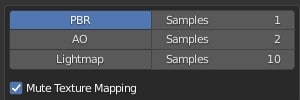
Ambient Occlusion Beacon #
This can be used to create AO maps for individual objects and groups of objects.
AO Distance – defines the size of the ambient shadow
A good value is between 0.1 and 1m and causes much less noise
UV Margin – determines how much space is left between each UV.
Bake Margin – when beaconing, n pixels (here 2) are baked beyond the UV boundary.
Unwrap – defines whether to create a new UV with the Lightmap identifier.
Denoise – uses a Bilateral Blur to blur the AO map.
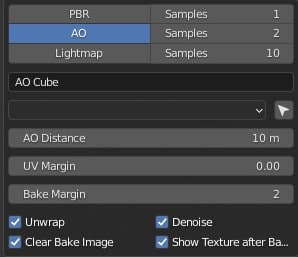
Lightmap beacon #
Lightmaps are integrated into the existing material as an emission node. The Govie Editor then inserts the lightmap into the designated Image Channel.
Tip –deactivate the camera light in the viewer or the diffuse light in the finished govie so that the lightmap becomes more visible
Denoise – uses an AI-based approach to create a noise-reduced lightmap from color, normal, and direct-diffuse maps
Show Texture after Bake – the baked texture is displayed on the object via Emisson Shader
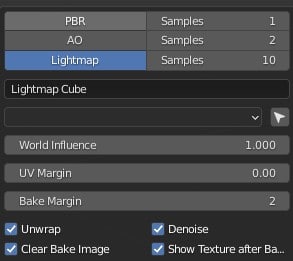
Visibility #
The Visibility menu is used to switch between original and newly created baked material. The display depends on the selected beacon type (PBR, AO, Lightmap) and the Affect setting in the Global Settings.
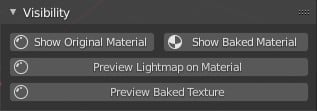
Show original material – a baked material is available (with “Bake” in the material name), the system switches back to the original material.

Show Baked Material – if a baked material exists for the currently selected material (depending on the Affect setting also all materials of all objects), the original material will be replaced by the baked one.

Preview Baked Material – Previously baked AO and lightmaps can be previewed before the model is exported.


